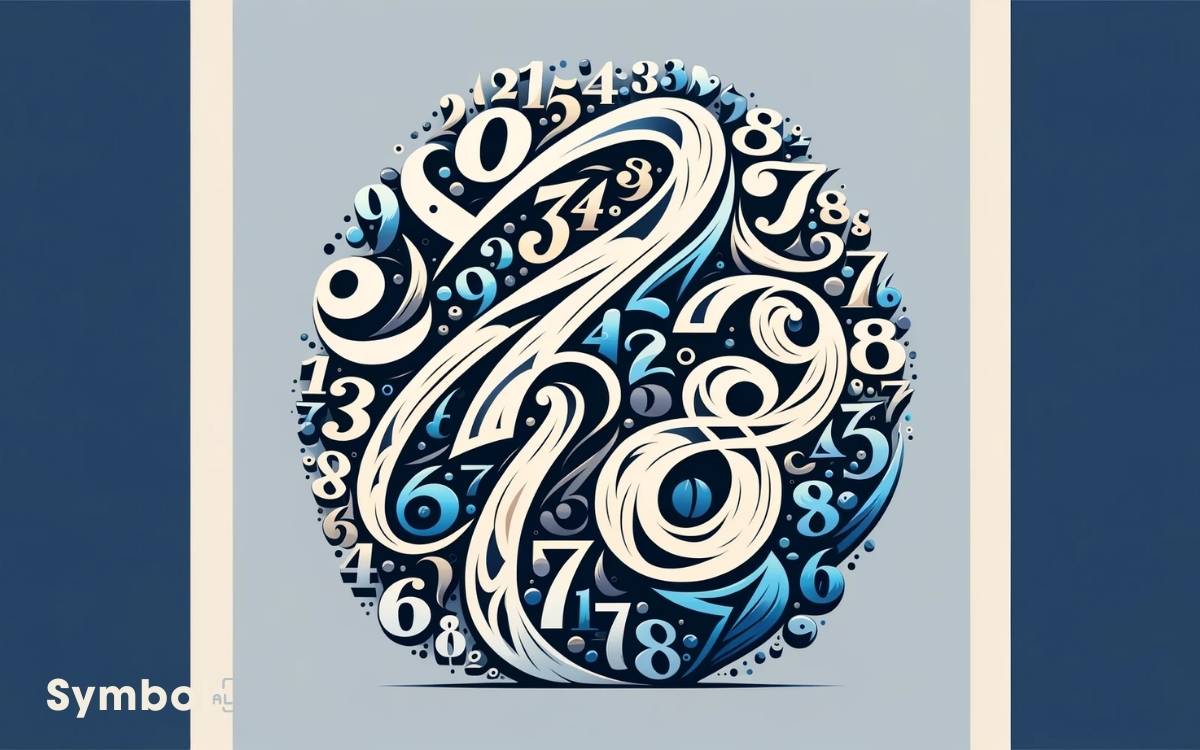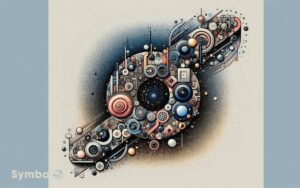Any Symbol Used to Write a Whole Number: 0 to 9 Digits!
Symbols used to write whole numbers have a rich history, evolving from ancient numeral systems to the efficient Hindu-Arabic numerals you use today.
These ten basic digits, from 0 to 9, form the foundation of modern mathematics, employing a positional value that revolutionizes calculations and arithmetic operations.
Their adaptability and practicality, especially with the introduction of zero, have made them superior for not only everyday use but also complex mathematical tasks.
From the Babylonians’ base-60 system to today’s base-10 system, each has uniquely contributed to how you understand and manipulate numbers. Exploring these systems further reveals intriguing insights into their development and application.

Key Takeaways
The Origin of Numerals
To understand how we write whole numbers today, it’s important to explore the origin of numerals, which started thousands of years ago in ancient civilizations.
Initially, simple tally marks were used for counting; a single stroke represented one unit. This method was practical for small numbers but became cumbersome for larger quantities.
Over time, civilizations developed more complex systems. The Egyptians used hieroglyphs, while the Romans employed letters from their alphabet (I, V, X, L, C, D, M) to signify numbers. Each system had its unique way of combining symbols to represent numbers efficiently.
These early numeral systems laid the groundwork for the numerals you use today, providing a structured method to denote quantity. They evolved through necessity, trade, and the spread of culture, shaping the way societies manage numerical information.
Understanding Hindu-Arabic Numerals
Delving into the world of Hindu-Arabic numerals, you’ll discover they’re the foundation of the numerical system used globally today. Originating over a thousand years ago, these symbols revolutionized how we record and work with numbers.
Here’s a systematic breakdown:
- Digits: The system consists of ten basic digits (1 through 9, plus an additional symbol to be discussed later). These symbols form the basis for representing all possible numbers.
- Place Value: Each digit’s position in a number determines its value, allowing for the compact representation of large numbers.
- Decimal System: It operates on a base-10 system, facilitating calculations and understanding across various mathematical operations.
The Role of Zero
Understanding the role of zero is essential, as it’s a cornerstone in the functionality of the Hindu-Arabic numeral system. Zero isn’t just a placeholder or a symbol to denote nothingness; it’s the backbone that allows for the accurate representation and differentiation of numbers.
For instance, without zero, distinguishing between 10 and 100 or setting apart 205 from 25 would be impossible. It’s zero that enables the positional notation system, where the value of a digit greatly depends on its position.
Additionally, zero plays a pivotal role in performing arithmetic operations, such as addition and multiplication. It acts as an identity element in addition and a neutral element in multiplication, making calculations streamlined and systematic.
Understanding zero’s function deepens your grasp of numerical concepts, enhancing your mathematical literacy.
Roman Numerals in History
While exploring the evolution of numerical systems, it’s important to examine the unique role Roman numerals played in history. You’ll find their impact undeniable in various fields.
To understand their significance, consider these points:
- Architecture and Engineering: Roman numerals were integral in the design and construction of ancient structures, aiding in the precise measurements and planning needed for monumental buildings.
- Timekeeping: They’ve been used on clock faces for centuries, demonstrating their enduring presence in everyday life.
- Documentation: Roman numerals facilitated the organization and categorization of legal and historical documents, ensuring a systematic approach to record-keeping.
Their methodical application across different domains showcases a numerical system that wasn’t only practical but also deeply woven into the fabric of history, embodying a legacy that transcends its original utilitarian purposes.
Chinese Numerical Symbols
Shifting to Chinese numerical symbols, it’s crucial to acknowledge their distinctiveness and efficiency in mathematical documentation. You’ll find that each symbol corresponds to a unique number, streamlining calculations and record-keeping.
Unlike Roman numerals, which rely on combinations of letters, Chinese symbols offer a direct representation. This system is decimal-based, meaning it revolves around units of ten, making it highly intuitive for arithmetic operations such as addition and multiplication.
Understanding these symbols requires recognizing their logical structure and simplicity. For example, the symbol for one (一) is a single horizontal line, while ten (十) is represented distinctly, showcasing the system’s straightforwardness.
This methodical approach guarantees that once you grasp the basic symbols, extending your understanding to larger numbers becomes a matter of pattern recognition.
Egyptian Hieroglyphic Numbers
Delving into the world of Egyptian hieroglyphic numbers, you’ll uncover a fascinating system where each symbol uniquely represents a specific value, offering a glimpse into the ancients’ innovative approach to mathematics.
This system is:
- Hierarchical: Unlike modern numerals, Egyptian numbers are depicted through a hierarchy of symbols. A single line represents the number one, while more complex symbols denote higher values, such as 100 or 1,000.
- Additive: To form numbers, you simply combine these symbols. For instance, two lines next to each other signify the number two.
- Symbolic: Unique symbols like a lotus flower for 1,000 or a finger for 10,000, indicate larger values, showcasing the Egyptians’ ability to abstract and conceptualize significant numbers.
This methodical approach demonstrates a sophisticated understanding of mathematics, embedded within their rich cultural heritage.
Mayan Numeration System
Exploring further into ancient numeration systems, let’s now focus on the sophisticated Mayan numeration system, known for its unique approach to representing whole numbers.
Diving into its mechanics, you’ll find that it’s primarily based on a vigesimal (base-20) system. This means the Mayans utilized a counting method that scales by powers of 20.
For numbers from 0 to 19, they employed a combination of dots and bars where one dot signifies 1 and a bar represents 5. The introduction of a zero, depicted as a shell shape, marked a significant advancement in their numerical representations.
Positioning plays an important role; vertical or horizontal arrangements of these symbols indicate different magnitudes, enabling the expression of large numbers efficiently.
This system allowed Mayans to perform complex calculations and maintain extensive astronomical records with remarkable precision.
The Evolution of Number Symbols
As you explore the history of numerical systems, you’ll first encounter ancient methods of counting and representation.
You’ll then learn how Arabic numerals revolutionized the way we write numbers, spreading across cultures with unprecedented ease.
Ancient Numerical Systems
To understand the modern numerical system, it’s important to examine the evolution of ancient number symbols. Ancient civilizations developed unique systems for representing numbers, which laid the groundwork for today’s numeric symbols.
Here’s a concise overview:
- Babylonian Numerals: Originating around 2000 BC, this system used a base-60 (sexagesimal) format. It allowed for the representation of large numbers and the concept of zero as a placeholder.
- Egyptian Hieroglyphs: Dating back to approximately 3000 BC, Egyptians used a decimal system. Symbols represented units, tens, hundreds, and so on, making it straightforward yet expansive.
- Roman Numerals: Developed around 500 BC, this system used letters from the Latin alphabet to represent numbers. It’s additive and subtractive principles allowed for the combination of symbols to express values clearly.
Each system reflects the culture’s needs and technological level, illustrating the diverse approaches to quantifying the world.
Arabic Numerals Spread
Why did Arabic numerals, originating in the Indian subcontinent, become the dominant numeric system worldwide?
The answer lies in their practicality and adaptability. These numerals, introduced to the Arab world through scholarly works, offered a more efficient way to perform calculations than previous systems. Their simplicity and the introduction of the concept of zero revolutionized mathematics.
As trade and scholarly exchanges flourished, Arabic numerals spread to Europe in the Middle Ages, facilitated by merchants and scholars. The system’s superiority in arithmetic operations led to its adoption over the Roman numerals, which were cumbersome for complex calculations.
European scholars, recognizing the advantages, integrated these numerals into the educational curriculum, further cementing their widespread use. This systematic adoption transformed them into the universal standard for representing numbers.
Modern Numerical Evolution
Following the widespread adoption of Arabic numerals, the evolution of number symbols has continued to shape how we represent and understand quantities. These numerals provided a universal framework, simplifying calculations and fostering advancements in science, commerce, and technology. Over centuries, cultures have adapted and expanded on these symbols, developing unique representations and functionalities to suit their needs. Through this evolution, the “number writing symbol meaning explained” has become a fascinating study, shedding light on the interplay between mathematics, culture, and human communication.
This progression has been characterized by three significant developments:
- Introduction of the Decimal System: This system, which includes the concept of zero, revolutionized mathematics by simplifying calculations and record-keeping.
- Expansion of Notation for Large Numbers: As mathematics and sciences advanced, the need for symbols to represent very large numbers led to the creation of scientific notation and other methods.
- Digital Representation of Numbers: In the digital age, binary and hexadecimal systems have become essential for computing, further diversifying how numbers are expressed and manipulated.
These developments demonstrate the dynamic nature of numerical representation, continually evolving to meet the needs of advancing societies.
Numerals in Modern Mathematics
In modern mathematics, numerals serve as the key symbols representing whole numbers. You encounter them in every aspect of quantitative analysis, calculation, and data representation.
Fundamentally, they’re the building blocks of numerical expression, facilitating communication of quantity and order. You’ll find that numerals aren’t just confined to the familiar digits from 0 to 9.
They extend to include larger values through the use of positional notation, where the position of a numeral greatly affects its value. This system allows for the concise representation of any whole number, no matter how large.
You use these principles when performing basic arithmetic operations, solving complex equations, or analyzing data. Understanding the role and function of numerals in modern mathematics is vital for anyone looking to engage with the subject on any level.
Conclusion
You’ve journeyed through the rich tapestry of numeral systems, from the ancient strokes of Egypt to the intricate symbols of the Mayans, and the revolutionary zero of Hindu-Arabic numerals.
These symbols haven’t just counted beans or measured land; they’ve built civilizations. Imagine a world where the Roman Empire still thrives, and you’re a trader.
Without Roman numerals, managing your accounts or trading goods across vast territories would be a chaotic endeavor.
This exploration underscores how pivotal numerals are in shaping our understanding and interaction with the world.






